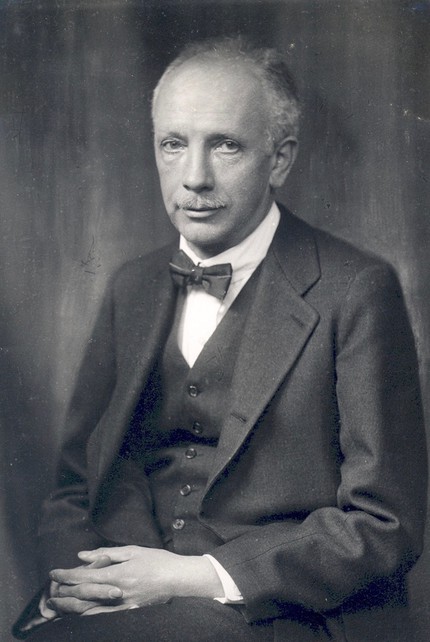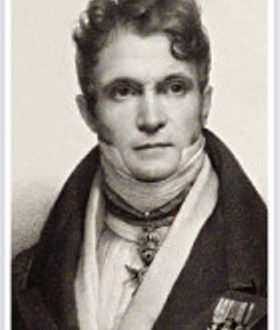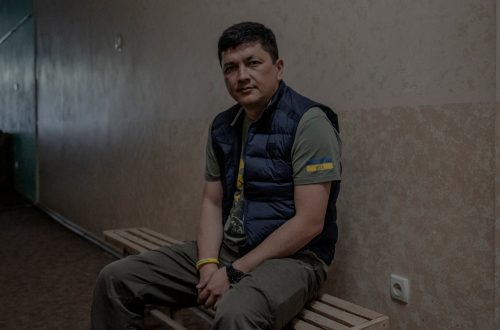
Richard Strauss |
Richard Strauss
Strauss Richard. “Thus spake Zarathustra.” Introduction

I want to bring joy and I need it myself. R. Strauss
R. Strauss – one of the largest German composers, the turn of the XIX-XX centuries. Along with G. Mahler, he was also one of the best conductors of his time. Glory accompanied him from a young age until the end of his life. The bold innovation of the young Strauss caused sharp attacks and discussions. In the 20-30s. XNUMXth century champions of the latest trends declared the composer’s work outdated and old-fashioned. However, despite this, his best works have survived decades and have retained their charm and value to this day.
A hereditary musician, Strauss was born and raised in an artistic environment. His father was a brilliant horn player and worked in the Munich Court Orchestra. The mother, who came from a family of a wealthy brewer, had a good musical background. The future composer received his first music lessons from her when he was 4 years old. The family played a lot of music, so it is not surprising that the boy’s musical talent manifested itself early: at the age of 6 he composed several plays and tried to write an overture for the orchestra. Simultaneously with home music lessons, Richard took a gymnasium course, studied art history and philosophy at the University of Munich. The Munich conductor F. Mayer gave him lessons in harmony, form analysis, and orchestration. Participation in an amateur orchestra made it possible to practically master the instruments, and the first composer’s experiments were immediately performed. Successful music lessons have shown that there is no need for a young man to enter the conservatory.
Strauss’ early compositions were written within the framework of moderate romanticism, but the outstanding pianist and conductor G. Bülow, critic E. Hanslik and. I. Brahms saw in them the great giftedness of the young man.
On the recommendation of Bülow, Strauss becomes his successor – the head of the court orchestra of the Duke of Saxe-Meidingen. But the seething energy of the young musician was crowded within the provinces, and he left the town, moving to the position of the third Kapellmeister at the Munich Court Opera. A trip to Italy left a vivid impression, reflected in the symphonic fantasy “From Italy” (1886), the impetuous finale of which caused heated debate. After 3 years, Strauss goes to serve in the Weimar Court Theater and, simultaneously with staging operas, writes his symphonic poem Don Juan (1889), which put him forward to a prominent place in world art. Bülow wrote: “Don Juan…” was an absolutely unheard of success.” The Strauss orchestra for the first time sparkled here with the power of Rubens’ colors, and in the cheerful hero of the poem, many recognized the self-portrait of the composer himself. In 1889-98. Strauss creates a number of vivid symphonic poems: “Til Ulenspiegel”, “Thus Spoke Zarathustra”, “The Life of a Hero”, “Death and Enlightenment”, “Don Quixote”. They revealed the composer’s great talent in many ways: magnificent brilliance, sparkling sound of the orchestra, bold boldness of the musical language. The creation of the “Home Symphony” (1903) ends the “symphonic” period of Strauss’s work.
From now on, the composer devotes himself to opera. His first experiments in this genre (“Guntram” and “Without Fire”) bear traces of the influence of the great R. Wagner, for whose titanic work Strauss, in his words, had “boundless respect”.
By the turn of the century, Strauss’ fame was spreading all over the world. His productions of operas by Mozart and Wagner are regarded as exemplary. As a symphonic conductor Strauss has toured to England, France, Belgium, Holland, Italy and Spain. In 1896, his talent was appreciated in Moscow, where he visited with concerts. In 1898, Strauss was invited to the post of conductor of the Berlin Court Opera. He plays a prominent role in musical life; organizes a partnership of German composers, is recruited by the president of the General German Musical Union, introduces a bill on the protection of composers’ copyrights to the Reichstag. Here he met R. Rolland and G. Hofmannsthal, a talented Austrian poet and playwright, with whom he had been collaborating for about 30 years.
In 1903-08. Strauss creates the operas Salome (based on the drama by O. Wilde) and Elektra (based on the tragedy by G. Hofmannsthal). In them, the composer is completely freed from the influence of Wagner.
Biblical and ancient stories in the interpretation of prominent representatives of European decadence acquire a luxurious and disturbing color, depict the tragedy of the decline of ancient civilizations. The bold musical language of Strauss, especially in “Electra”, where the composer, in his own words, “reached the extreme limits … of the ability to perceive modern ears,” provoked opposition from performers and critics. But soon both operas began their triumphal march across the stages of Europe.
In 1910, a turning point occurred in the composer’s work. In the midst of a stormy conductor’s activity, he creates the most popular of his operas, Der Rosenkavalier. The influence of Viennese culture, performances in Vienna, friendship with Viennese writers, long-standing sympathy for the music of his namesake Johann Strauss – all this could not but be reflected in the music. An opera-waltz, fanned by the romance of Vienna, in which funny adventures, comic intrigues with disguises, touching relationships between lyrical heroes are intertwined, the Rosenkavalier was a brilliant success at the premiere in Dresden (1911) and soon quickly conquered the stages of many countries, becoming one of the most popular operas of the XX in.
Strauss’s Epicurean talent flourishes with unprecedented breadth. Impressed by a long trip to Greece, he wrote the opera Ariadne auf Naxos (1912). In it, as in the subsequently created operas Helena of Egypt (1927), Daphne (1940) and The Love of Danae (1940), the composer from the position of a musician of the XNUMXth century. paid tribute to the images of ancient Greece, the light harmony of which was so close to his soul.
The First World War caused a wave of chauvinism in Germany. In this environment, Strauss managed to maintain independence of judgment, courage and clarity of thought. Rolland’s anti-war sentiments were close to the composer, and friends who found themselves in warring countries did not change their affection. The composer found salvation, by his own admission, in “diligent work.” In 1915, he completed the colorful Alpine Symphony, and in 1919, his new opera was staged in Vienna to the libretto of Hofmannsthal, The Woman Without a Shadow.
In the same year, Strauss for 5 years becomes the head of one of the best opera houses in the world – the Vienna Opera, is one of the leaders of the Salzburg festivals. On the occasion of the 60th anniversary of the composer, festivals dedicated to his work were held in Vienna, Berlin, Munich, Dresden and other cities.

The creativity of Strauss is amazing. He creates vocal cycles based on poems by I. V. Goethe, W. Shakespeare, C. Brentano, G. Heine, “a cheerful Viennese ballet” “Shlagober” (“Whipped cream”, 1921), “a burgher comedy with symphonic interludes” opera ” Intermezzo (1924), the lyrical musical comedy from Viennese life Arabella (1933), the comic opera The Silent Woman (based on the plot of B. Johnson, in collaboration with S. Zweig).
With the advent of Hitler to power, the Nazis first sought to recruit prominent figures of German culture into their service. Without asking the composer’s consent, Goebbels appointed him head of the Imperial Music Chamber. Strauss, not foreseeing the full consequences of this move, accepted the post, hoping to oppose evil and contribute to the preservation of German culture. But the Nazis, without ceremony with the most authoritative composer, prescribed their own rules: they forbade a trip to Salzburg, where German emigrants came, they persecuted the librettist Strauss S. Zweig for his “non-Aryan” origin, and in connection with this they banned the performance of the opera The Silent Woman. The composer could not contain his indignation in a letter to a friend. The letter was opened by the Gestapo and as a result, Strauss was asked to resign. However, watching the activities of the Nazis with disgust, Strauss could not give up creativity. Unable to cooperate with Zweig anymore, he is looking for a new librettist, with whom he creates the operas Day of Peace (1936), Daphne, and Danae’s Love. Strauss’ last opera, Capriccio (1941), once again delights with its inexhaustible power and brightness of inspiration.
During the Second World War, when the country was covered in ruins, the theaters of Munich, Dresden, Vienna collapsed under the bombing, Strauss continues to work. He wrote a mournful piece for strings “Metamorphoses” (1943), romances, one of which he dedicated to the 80th anniversary of G. Hauptmann, orchestral suites. After the end of the war, Strauss lived in Switzerland for several years, and on the eve of his 85th birthday he returned to Garmisch.
Strauss’ creative heritage is extensive and varied: operas, ballets, symphonic poems, music for dramatic performances, choral works, romances. The composer was inspired by a wide variety of literary sources: these are F. Nietzsche and J. B. Moliere, M. Cervantes and O. Wilde. B. Johnson and G. Hofmannsthal, J. W. Goethe and N. Lenau.
The formation of the Strauss style took place under the influence of the German musical romanticism of R. Schumann, F. Mendelssohn, I. Brahms, R. Wagner. The bright originality of his music first manifested itself in the symphonic poem “Don Juan”, which opened a whole gallery of program works. In them, Strauss developed the principles of the program symphonism of G. Berlioz and F. Liszt, saying a new word in this area.
The composer gave high examples of the synthesis of a detailed poetic concept with a masterfully thought out and deeply individualized musical form. “Program music rises to the level of artistry when its creator is primarily a musician with inspiration and skill.” Strauss’s operas are among the most popular and frequently performed works of the XNUMXth century. Bright theatricality, entertaining (and sometimes some confusion) of intrigue, winning vocal parts, colorful, virtuoso orchestral score – all this attracts performers and listeners to them. Having deeply mastered the highest achievements in the field of the opera genre (primarily Wagner), Strauss created original examples of both tragic (Salome, Electra) and comic opera (Der Rosenkavalier, Arabella). Avoiding the stereotypical approach in the field of operatic dramaturgy and having a huge creative imagination, the composer creates operas in which comedy and lyricism, irony and drama are bizarrely but quite organically combined. Sometimes Strauss, as if jokingly, effectively fuses different time layers, creating a dramatic and musical confusion (“Ariadne auf Naxos”).
Strauss’s literary heritage is significant. The greatest master of the orchestra, he revised and supplemented Berlioz’s Treatise on Instrumentation. His autobiographical book “Reflections and Reminiscences” is interesting, there is an extensive correspondence with his parents, R. Rolland, G. Bülov, G. Hofmannsthal, S. Zweig.
Strauss’ performance as an opera and symphony conductor spans 65 years. He performed in concert halls in Europe and America, staged opera performances in theaters in Austria and Germany. In terms of the scale of his talent, he was compared with such luminaries of the conductor’s art as F. Weingartner and F. Motl.
Assessing Strauss as a creative person, his friend R. Rolland wrote: “His will is heroic, conquering, passionate and powerful to greatness. This is what Richard Strauss is great for, this is what he is unique at the present time. It feels the power that rules over people. It is these heroic aspects that make him the successor to some part of the thoughts of Beethoven and Wagner. It is these aspects that make him one of the poets – perhaps the largest of modern Germany … “
V. Ilyeva
- Opera works of Richard Strauss →
- Symphonic works of Richard Strauss →
- List of works by Richard Strauss →

Richard Strauss is a composer of outstanding skill and enormous creative productivity. He wrote music in all genres (except church music). A bold innovator, the inventor of many new techniques and means of the musical language, Strauss was the creator of original instrumental and theatrical forms. The composer synthesized various types of classical-romantic symphonism in a one-movement program symphonic poem. He equally mastered the art of expression and the art of representation.
Melodika Strauss is diverse and variegated, clear diatonic is often replaced by chromatic. In the melodies of Strauss’s operas, along with German, Austrian (Viennese – in lyrical comedies) national color appears; conditional exoticism dominates in some works (“Salome”, “Electra”).
Finely differentiated means rhythm. Nervousness, impulsiveness of many topics are associated with frequent changes in meter, asymmetric constructions. The vibrating pulsation of unsteady sonorities is achieved by the polyphony of diverse rhythmic and melodic constructions, the polyrhythmicity of the fabric (especially in Intermezzo, Cavalier des Roses).
In the harmony the composer followed from Wagner, enhancing its fluidity, uncertainty, mobility and, at the same time, brilliance, inseparable from the expressive brilliance of instrumental timbres. Strauss’s harmony is filled with delays, auxiliary and passing sounds. At its core, Strauss’s harmonic thinking is tonal. And at the same time, as a special expressive device, Strauss introduced chromatisms, polytonal overlays. Rigidity of sound often arose as a humorous device.
Strauss achieved great skill in the field orchestration, using the timbres of instruments as bright colors. During the years of the creation of Elektra, Strauss was still a supporter of the power and brilliance of an enlarged orchestra. Later, maximum transparency and cost savings become the composer’s ideal. Strauss was one of the first to use the timbres of rare instruments (alto flute, small clarinet, heckelphone, saxophone, oboe d’amore, rattle, wind machine from a theater orchestra).
The work of Strauss is one of the largest phenomena in the world musical culture of the late 19th and 20th centuries. It is deeply connected with the classical and romantic traditions. Like the representatives of 19th-century romanticism, Strauss strove to embody complex philosophical concepts, to increase the expression and psychological complexity of lyrical images, and to create satirical and grotesque musical portraits. At the same time, he conveyed with inspiration a high passion, a heroic impulse.
Reflecting the strong side of his artistic era – the spirit of criticism and the desire for novelty, Strauss experienced the negative effects of the time, its contradictions to the same extent. Strauss accepted both Wagnerianism and Nietzscheism, and was not averse to prettiness and frivolity. In the early period of his creative work, the composer loved the sensation, shocked the conservative public, and placed above all the brilliance of craftsmanship, the refined culture of creative work. For all the complexity of the artistic concepts of Strauss’s works, they often lack internal drama, the significance of the conflict.
Strauss went through the illusions of late romanticism and felt the high simplicity of pre-romantic art, especially Mozart, which he loved, and at the end of his life he again felt an attraction to deep penetrating lyricism, free from external showiness and aesthetic excesses.
O. T. Leontieva
- Opera works of Richard Strauss →
- Symphonic works of Richard Strauss →
- List of works by Richard Strauss →





